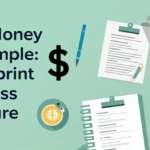The Best Fluffy Pancakes recipe you will fall in love with. Full of tips and tricks to help you make the best pancakes.
Table of Contents
Understanding the Debt Cycle

Get Out of Debt
The debt cycle refers to a continuous loop in which individuals escalate their borrowing and struggle to repay existing debts, often leading to an increasing financial burden. Many people find themselves caught in this cycle due to various triggers. These can include unforeseen expenses, such as medical bills or major home repairs, or lifestyle choices that lead to overspending, such as dining out frequently or making impulsive purchases. Before long, individuals may rely more heavily on credit cards or personal loans, which can further exacerbate their financial situation.
Emotional factors also play a significant role in the debt cycle. Many individuals may experience feelings of shame, anxiety, or hopelessness when confronted with their debt situation. learn: Budgeting and Personal Finance Management: Get Expert Now!; These emotions can create significant psychological barriers to successfully addressing their debt. For example, someone may avoid looking at their bank statements or credit card bills out of fear, leading to further financial mismanagement. Recognizing these emotional responses is crucial in understanding the debt cycle and taking proactive steps toward recovery.
Additionally, the effects of debt accumulation extend beyond just the financial realm. The ongoing stress of managing debt can lead to physical health issues, relationship struggles, and decreased productivity in both personal and professional settings. It is essential for individuals to identify the common triggers of their debt accumulation, recognize the psychological barriers they face, and understand how to break free from the cycle. By doing so, they can begin to implement effective strategies for managing and ultimately eliminating their debt, paving the way toward financial stability and improved well-being.
Creating a Comprehensive Budget
Developing a comprehensive budget is a critical step towards effective debt repayment. By prioritizing financial responsibilities and optimizing expenditures, individuals can gain control over their finances. The first step in creating a realistic budget is to assess your total income. This includes all sources such as your salary, bonuses, and any additional income streams. Understanding your total income sets the foundation for determining how much money is available for discretionary spending and debt repayment.
Following the income assessment, the next crucial step is to evaluate your overall expenses. Start by categorizing your spending into fixed and variable expenses. Fixed expenses typically encompass rent or mortgage payments, utilities, and insurance, while variable expenses include groceries, entertainment, and dining out. By examining past spending habits, you can gain insights into where adjustments can occur. Identifying non-essential expenses is vital, as these funds can be redirected toward debt payments.
With the income and expenses laid out, the next step is to develop a financial plan that incorporates debt payments while still accommodating necessary living expenses. Allocate a portion of your budget specifically for debt repayment, prioritizing high-interest debts such as credit card balances. Consider employing the snowball or avalanche method to tackle debts strategically. The snowball method focuses on paying off the smallest debts first, while the avalanche method emphasizes paying down those with the highest interest rates first.
To ensure that your budget remains effective over time, tracking spending is essential. Utilize budgeting tools or apps to monitor your expenses regularly, which helps in making necessary adjustments. Periodic reviews of your financial plan, ideally monthly or quarterly, can help identify any areas needing modification. This continuous evaluation allows for more accurate budgeting, making it feasible to stay on track with debt repayment goals. By adhering to a structured budget, individuals can effectively maneuver their way out of debt while maintaining necessary living standards.
Debt Snowball vs. Debt Avalanche Methods

The journey to financial freedom often involves debt repayment strategies, among which the debt snowball and debt avalanche methods are the most popular. Each of these methods offers a distinct approach to tackling outstanding obligations and appeals to different psychological and mathematical preferences among individuals.
The debt snowball method prioritizes the repayment of the smallest debts first, regardless of their interest rates. By focusing on these smaller amounts, individuals experience quick wins that can foster motivation and a sense of accomplishment. As the smallest debts are paid off, the freed-up funds can subsequently be directed toward the next smallest debt, creating a momentum effect. This psychological benefit is crucial for many, as it can enhance commitment to the debt repayment plan and, ultimately, encourage responsible financial habits.
Conversely, the debt avalanche method targets the debts with the highest interest rates first. This mathematically driven approach minimizes the total interest paid over time, as it focuses on reducing the higher-cost obligations that contribute to the overall debt burden. It is particularly effective for individuals who may have significant debts with considerable interest rates, as this strategy can expedite the process of becoming debt-free in a financially prudent manner.
When deciding which strategy aligns best with one’s individual financial situation, it is essential to consider both the emotional and financial implications. While the snowball method may be more suitable for those needing immediate psychological reinforcements, the avalanche method can appeal to those who prefer a strictly analytical approach. Ultimately, both methods have proven effective in their own right, and choosing the one that resonates most with personal motivation and financial circumstances can significantly influence the success of debt repayment efforts.
Cutting Unnecessary Expenses
In the journey towards financial freedom, identifying and eliminating unnecessary expenses can be a critical step. Individuals often overlook minor expenditures that, when accumulated, significantly impact their overall debt situation. Start by evaluating daily expenses, particularly in common areas such as dining out, entertainment, and subscription services. These categories reveal ample opportunities for savings.
Dining out frequently is one of the most prevalent habits that leads to overspending. While enjoying meals at restaurants can be a pleasant experience, it can quickly become a financial burden. To mitigate costs, consider setting a monthly budget for dining. Limit eating out to special occasions and focus on meal-prepping at home. By cooking in bulk, individuals not only save money but also control ingredient quality, contributing to a healthier lifestyle.
Subscription services are another avenue where unnecessary spending can occur. Many people subscribe to multiple streaming platforms, magazine subscriptions, or membership services. Conduct a thorough review of these subscriptions and assess their usage. Cancel services that are rarely utilized or consolidate subscriptions to save money. For instance, some platforms offer bundled services at a discounted rate, which can prove advantageous without compromising content quality.
Additionally, taking a closer look at recurring bills may reveal opportunities for savings. Evaluate existing service providers for internet, phone, and insurance. Comparing rates from different companies can lead to better deals. Many companies offer promotions for new customers, and negotiating with current providers may yield discounts.
Incorporating these strategies into daily life not only helps in cutting unnecessary expenses but also fosters a more mindful approach to spending. As individuals begin to eliminate superfluous costs, they can redirect these funds towards paying off debt, thus accelerating the path to financial stability.
Increasing Income: Side Hustles and More

As individuals seek to improve their financial situations by paying off debts more efficiently, increasing income through side hustles, part-time jobs, or freelance work has emerged as a viable strategy. Diverse opportunities abound for people with various skill sets and lifestyles, making it essential to explore options suited for personal circumstances.
One popular method of generating additional income is through side hustles, which can range from freelance writing, graphic design, or digital marketing to offering services such as tutoring, dog walking, or home cleaning. Online platforms like Upwork, Fiverr, and TaskRabbit provide an avenue for individuals to showcase their skills and connect with potential clients, thus enabling them to monetize their talents effectively. Another option is participating in the gig economy, which allows individuals to work on their schedules while generating extra income.
Part-time employment is also a feasible option for those willing to dedicate fixed hours to a secondary job. Before committing, it is crucial to assess time availability, as balancing multiple commitments can lead to burnout. Responsibilities should be evaluated, and positions that offer flexible scheduling, such as retail, food service, or remote work, can help ensure that personal priorities are not compromised.
Freelance work can serve as another avenue to enhance income. The first step is identifying strengths and interests to find suitable opportunities, whether it’s web development, consulting, or content creation. By establishing clear goals regarding the amount of income needed for debt repayment, individuals can maintain motivation and focus. It is advisable to set aside a portion of earnings specifically for debt repayment to track progress and celebrate small victories along the way.
Ultimately, effective time management and self-discipline are paramount in balancing extra work with personal life. Establishing a structured routine can assist in achieving financial goals without sacrificing well-being. With the right approach, individuals can utilize side hustles and additional work to significantly boost their income, paving the way for a faster de-bt repayment journey.
Negotiating with Creditors
When confronted with mounting debts, negotiating with creditors can serve as a powerful tool to alleviate financial burdens. The initial step in this process involves adequately preparing for the conversation with your creditors. This preparation should include a comprehensive overview of your current financial situation, including a detailed list of your debts, income, and monthly expenses. Having this information at hand will enable you to present a clear picture of your financial challenges, underscoring the necessity for negotiation.
In approaching creditors, it is crucial to communicate openly and honestly. Reach out via phone or written correspondence, detailing your circumstances without making any promises you cannot keep. A respectful tone can foster goodwill and may lead to more favorable outcomes. Additionally, it is often beneficial to contact your creditor as soon as you anticipate difficulty in making payments. Proactive communication can greatly increase the chances of a favorable negotiation outcome.
During negotiations, it can be advantageous to request a reduction in interest rates or to explore options for settling debts for less than the total amount owed. Creditors may be inclined to consider such proposals, especially when they believe they might not collect the total de-bt otherwise. Be prepared to discuss your proposed solutions and expect some back-and-forth dialogue. Sometimes, creditors may present counteroffers, and having a clear understanding of what you can afford can assist you in navigating these proposals.
Successful negotiations can lead to tangible benefits, such as lowered monthly payments, reduced interest rates, or settlements that allow you to pay off debts at a fraction of the amount owed. These outcomes not only ease the immediate financial strain but also empower you to regain control over your financial future, highlighting the importance of taking this step seriously.
Utilizing Financial Tools and Apps

In today’s digital age, financial tools and apps play a crucial role in managing de-bt and achieving financial objectives. These resources can provide invaluable support by helping users track their spending, create budgets, and devise effective de-bt repayment plans. With a variety of options available, selecting the right financial tool or app can significantly enhance your journey to becoming de-bt-free.
Budgeting applications, such as Mint and YNAB (You Need A Budget), are designed to facilitate detailed financial planning. Mint automatically categorizes transactions, allowing users to visualize their spending habits. This feature assists in identifying areas where one can cut back, ultimately directing more funds towards debt repayment. On the other hand, YNAB emphasizes proactive budgeting, encouraging users to allocate every dollar toward specific goals, which can foster healthier financial behaviors and support efficient de-bt management.
De-bt repayment calculators represent another valuable tool that can help users structure their payment strategies. These online calculators allow users to input their debts, interest rates, and monthly payments to determine the most effective repayment tactics. Some calculators offer options to explore scenarios like de-bt snowball or de-bt avalanche methods, empowering users to choose the approach that best suits their financial situation.
Moreover, financial planning tools, such as Personal Capital and EveryDollar, provide comprehensive insights into overall financial health. Personal Capital tracks investments and assets, enabling users to monitor their net worth while also addressing de-bt management. EveryDollar, like YNAB, emphasizes monthly budgeting and offers a straightforward interface for organizing finances. These tools not only keep users informed about their current standing but also assist in setting realistic financial goals.
Ultimately, leveraging these financial tools and mobile applications can significantly aid users in managing their de-bt effectively. By fostering financial awareness and promoting disciplined spending habits, they pave the way for a successful journey toward financial freedom.
Establishing an Emergency Fund
One of the essential strategies for achieving financial stability, especially when on a journey to alleviate de-bt, is establishing an emergency fund. An emergency fund serves as a financial safety net that can help navigate unexpected expenses, such as medical emergencies, car repairs, or urgent home repairs, without resorting to additional de-bt. By creating this cushion, individuals can avoid the pitfalls of relying on credit, thereby preventing the cycle of accumulating more de-bt.
To effectively build an emergency fund while managing existing debts, it is crucial to approach the process systematically. Begin by determining a realistic savings goal, typically ranging from three to six months’ worth of essential expenses. This amount will serve as a benchmark and provide clarity on the ultimate target. Individuals may find it helpful to break this goal down into smaller, more manageable milestones, which can make saving feel less daunting.
Next, prioritize setting aside a specific amount of money from each paycheck to contribute to the emergency fund. Even if the amount is modest, consistency is key. Consider opening a separate savings account dedicated solely to this purpose. This segregation can help to reduce the temptation to dip into these funds for non-emergency expenses. Additionally, automating the deposit process can further streamline savings efforts and ensure that contributions are made regularly.
While it may seem challenging to save while simultaneously paying off de-bt, it’s vital to strike a balance. Adjusting discretionary spending and finding areas where expenses can be minimized can free up additional funds for both de-bt repayment and emergency savings. Keep in mind that every dollar saved creates a buffer against future financial strains, enabling a more effective de-bt repayment strategy without the fear of unexpected expenses derailing progress.
Staying Motivated and Accountable

Maintaining motivation during the de-bt repayment journey is a crucial aspect of achieving financial freedom. One effective strategy is to set achievable milestones. Breaking down the overall de-bt into smaller, manageable goals can provide a sense of progress. For instance, rather than focusing solely on the total sum owed, consider targeting smaller debts first. This approach, often referred to as the snowball method, can help build momentum and encourage continued effort.
Celebrating small victories is another important technique for staying motivated. Each time a debt is paid off or a specified amount is saved, take the time to acknowledge this achievement. These celebrations can be as simple as treating oneself to a favorite meal or enjoying a day out. Recognizing progress not only reinforces positive behavior but also fosters a sense of accomplishment that strengthens the commitment to the larger goal of de-bt elimination.
Moreover, finding accountability partners or joining support groups can significantly enhance motivation. Sharing one’s financial journey with trusted friends, family members, or others in similar situations can provide encouragement and perspective. An accountability partner can offer support during difficult times, share strategies, and celebrate successes together. Support groups, whether online or in-person, can facilitate a sense of community, making the process feel less isolating and more collaborative.
It is also vital to cultivate a positive mindset throughout the de-bt repayment process. Focusing on the benefits of being de-bt-free—such as improved mental health, increased savings capacity, and enhanced financial security—can serve as a powerful motivator. Regularly reminding oneself of these benefits and remaining committed to financial goals will help sustain motivation over the long term. In conclusion, utilizing a combination of achievable milestones, celebrating victories, and fostering accountability can create a supportive framework for staying motivated on the path out of de-bt.









